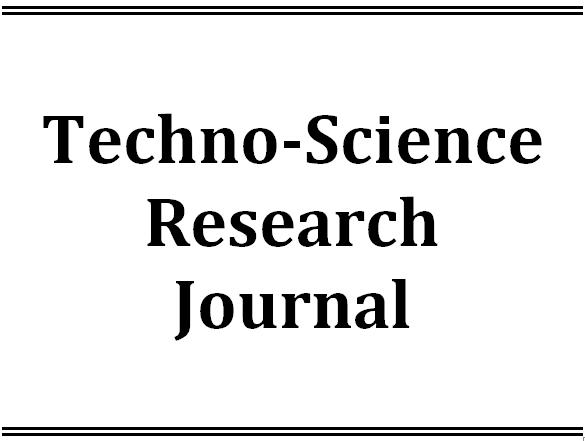Latest Issue
Empowering Education with Online Khmer Handwritten Text Recognition for Teaching and Learning Assistance
Published: August 30,2025Undergraduate Student Dropout Prediction with Class Balancing Techniques
Published: August 30,2025Status of Seawater Quality at Koh Rong Island, Sihanoukville, Cambodia
Published: August 30,2025Low-Complexity Detection of Primary Synchronization Signal for 5G New Radio Terrestrial Cellular System
Published: August 30,2025Word Spotting on Khmer Printed Documents
Published: August 30,2025Tuning Hyperparameters Learning Rate and Gamma in Gym Environment Inverted Pendulum
Published: August 30,2025Examining Passenger Loyalty in Phnom Penh Public Bus System: A Structural Equation Modelling Approach
Published: August 30,2025Prediction on Load model for future load profile of Electric Vehicle charging demand in Phnom Penh
Published: August 30,2025Economic Study on Integrating PV-DG with Grid-Tie: Case Study in Cambodia
Published: August 30,2025Development of Spicy Sweet Chili Sauce
-
1. Food Technology and Nutrition Research Unit, Institute of Technology of Cambodia, Russian Federation Blvd., P.O. Box 86, Phnom Penh, Cambodia
Academic Editor:
Received: April 11,2021 / Revised: / Accepted: May 15,2021 / Available online: June 29,2021
The development of spicy sweet chili sauce in Cambodia is still limited although many companies have been producing this kind of product. They are facing a lot of problems related to the consistency of the sauce. The objective of this study was to develop a spicy sweet chili sauce to meet the requirement of Cambodia standard and to compare with the commercial products available in Cambodia market. To achieve this, three steps i.e. preselection of chili type (fresh chili, dried chili and a mixture of fresh and dried chili), xanthan gum concentration (0.10 %, 0.20 % and 0.25 %) and acid type (lactic acid, acetic acid and a mixture of lactic and acetic acid) were studied and two commercial products (control 1 and control 2) were selected to compare with our final product. Fresh chili, 0.20 % of xanthan gum and the mixture of lactic acid and acetic acid were selected as the best proportion for producing spicy sweet chili sauce. The viscosity (1054.0 ± 19.0 mPa.S) and total acid (4.21 ± 0.11 g/L) of the final product were not significantly different compared to the control 1 (P ≥ 0.05), but significantly lower than control 2 (P < 0.05). However, the total sugar (22.81 ± 0.6 %) and protein content (1.92 ± 0.01 %) of the final product were significantly higher than to those of the control 1 and control 2 (P < 0.05). The scores of all attributes i.e. color, consistency, garlic flavor, chili aroma, sweetness, sourness, saltiness, spiciness, and overall liking were not significantly different compared to those of the control 1 (P ≥ 0.05)and higher than those of control 2 (P < 0.05). The total plate count, yeast and mold were not detected in the product because food additives (lactic acid and acetic acid) and preservative (sodium benzoate) were added.

